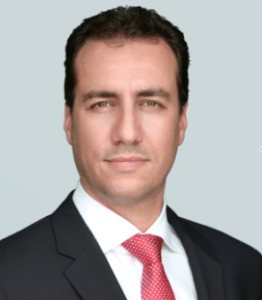Registering a trademark is an important step for a technology startup or entrepreneur launching a new brand, mobile application, software technology, or even hardware products. Brand matters, and trademarks protect legally protect brand names by giving a trademark owner the legal right to exclude others from using an identical trademark that is likely to cause confusion in market.
But can two identical trademarks both coexist in the marketplace and avoid likelihood of confusion? The short answer is yes, but it depends on legal analysis of the factors that govern likelihood of confusion law in the United States.
To analyze these questions, we will look to two famous brands, both with federally registered trademarks of the same word mark: Pandora Jewelry and Pandora Radio.
Identical Trademarks Can Coexist
The comparison of Pandora Radio, and Pandora Jewelry illustrates an interesting situations where identical trademarks coexist in the marketplace and avoid the likelihood of confusion.
The term PANDORA is a registered trademark of the jewelry company Pandora, Inc. registered in International Class 014 (jewelry). It has a priority date of June 2008.
However, the term “PANDORA” is also a registered trademark for the online music/radio streaming service Pandora, registered in International Classes 038 (communication) and 041 (education and entertainment). Its U.S. Registration Number is 3173558. It has a priority date of July 16, 2005.
So why are these two companies with the same exact name allowed to co-exist, operating under the same name, both with a federally registered trademark? To answer this question, we must perform a Likelihood of Confusion analysis and determine if the marks are so similar as to create a likelihood that the average consumer would confuse the two brands.
The U.S. Patent and Trademark Office (“USPTO”) will deny trademark registration for any mark that is deemed close enough to an existing mark to create a risk of confusion in the marketplace. There are many factors that the USPTO considers in making this determination, but the two most important factors which we cover in this blog on the famous DuPont factors in likelihood confusion analysis in trademark law. For purposes of this discussion we will focus on the two most dominant factors, which are: (1) the similarity of the mark; and (2) the degree to which the channels of trade overlap. This essentially means that marks operating in the same geographical location and the same industry must be highly dissimilar or that marks that are highly similar must be in different industries or geographical locations to be deemed *not* to create a likelihood of confusion.
In the case of Pandora (jewelry) and Pandora (radio), these marks obviously qualify as highly similar as they are quite literally identical. Since these marks will be deemed highly similar, Pandora (jewelry) needed to be in a distinct enough industry in order to not create a likelihood of confusion with the already existing Pandora (radio) mark with a priority date three years prior.
These two industries are so distinct that it is very reasonable to assume that the average consumer will not be likely to confuse these two brands with each other. Additionally, the individual branding of each of these two companies offers more evidence that the consuming public will not be confused by the brands having the same name. The two company logos can be seen below:
Pandora Jewelry:
Pandora Radio:
These are likely reasons why Pandora Jewelry was allowed to register their trademark with the USPTO and was not denied registration due to the Likelihood of Confusion.
Entrepreneurs that are unsure whether their trademark will infringe upon an already existing trademark should perform a preliminary trademark search at tmsearch.uspto.gov and consult with an experienced trademark attorney before considering whether two identical trademarks can coexist in the marketplace, and avoid a likelihood confusion trademark infringement lawsuit.


